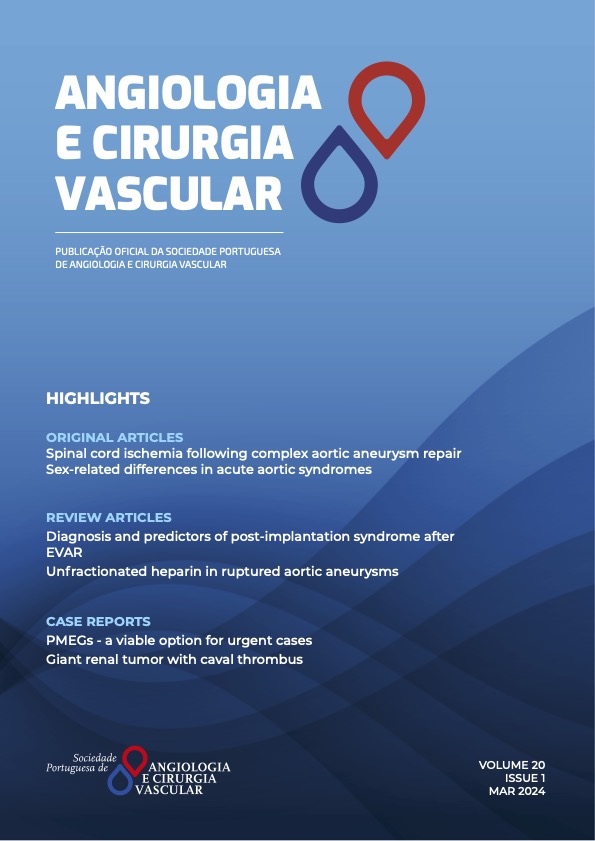Fenestrated Physician-Modified Endografts (PMEGs) - a viable option for urgent cases
DOI:
https://doi.org/10.48750/acv.572Keywords:
Physician-modified endograft, physician-modified stent graft, Abdominal aortic aneurysm, thoracoabdominal aortic aneurysm, Juxtarenal aneurysmAbstract
INTRODUCTION: Fenestrated and branched stent graft technology has come a long way over the past few years, enabling the treatment of complex juxtarenal aneurysms, thoracoabdominal aneurysms, and arch pathologies. Many innovations have been developed, namely device and delivery optimization and technical tricks. These concepts have proven to work well when there is sufficient time to plan and manufacture a custom-made device for the patient. However, this is different in urgent or emergent cases. Using parallel graft techniques or off-the-shelf stent grafts may be efficient in urgent situations, but it is also associated with selection limitations. Recent publications have demonstrated similar mid-term technical and clinical results between physician-modified endografts (PMEGs) and customized devices. The authors aim to describe their institutional series of PMEGs.METHODS: The clinical files of all patients undergoing PMEGs were consulted, and demographic data as surgery outcomes were collected. Technical success: creating the intended number of fenestrations, target vessel catheterization, and patency. Procedural success: technical success with adequate aneurysm exclusion and without endoleak in the final angiography. 30-day complications and mortality were also evaluated. Technical and procedural success were assessed, as well as morbidity and mortality.
RESULTS: Between December 2020 and December 2022, 3 patients underwent PMEGs. The indications were a juxtarenal aortic aneurysm, a type V thoracoabdominal aneurysm and a persistent type 1a endoleak. All patients were symptomatic, with one stable rupture. All cases were performed with technical and procedural success and no morbidity and mortality at 30 days.
CONCLUSION: Stent graft modification is a valuable and valid tool in emergencies and should be a vascular surgeon's trump card when dealing with complex aortic pathologies. Nevertheless, due to the absence of long-term evidence, it should be reserved for acute patients unfit for open repair and in aneurysms with unfavorable anatomy for an off-the-shelf device.
Downloads
References
Pyun AJ, Han SM. Contemporary indications, techniques, and outcomes of physician-modified endografts for the treatment of complex abdominal and TAAA aortic aneurysms. Semin Vasc Surg. 2022;35:364–73.
O’Donnell TF, Patel VI, Deery SE, Li C, Swerdlow NJ, Liang P, et al. The state of complex endovascular abdominal aortic aneurysm repairs in the Vascular Quality Initiative. J Vasc Surg 2019;70:369–80.
Oderich GS, Maurício Serra Ribeiro, Sandri GA, Tenorio ER, Hofer JM, Mendes BC, et al. Evolution f rom physician-modified to company-manufactured fenestrated-branched endografts to treat pararenal and TAAA aortic aneurysms. J Vasc Surg. 2019;70:31-42
Smith JA, Sarode AL, Stern JR, Cho JS, Harth KC, Wong VL, et al. Physician-modified endografts are associated with a survival benefit over parallel grafting in TAAA aneurysms. J Vasc Surg. 2022;76:318-25
Chait J, Tenorio ER, Hofer JM, DeMartino RR, Oderich GS, Mendes BC. Five-year outcomes of physician-modified endografts for repair of complex abdominal and TAAA aortic aneurysms. J Vasc Surg. 2023;77:374-85









